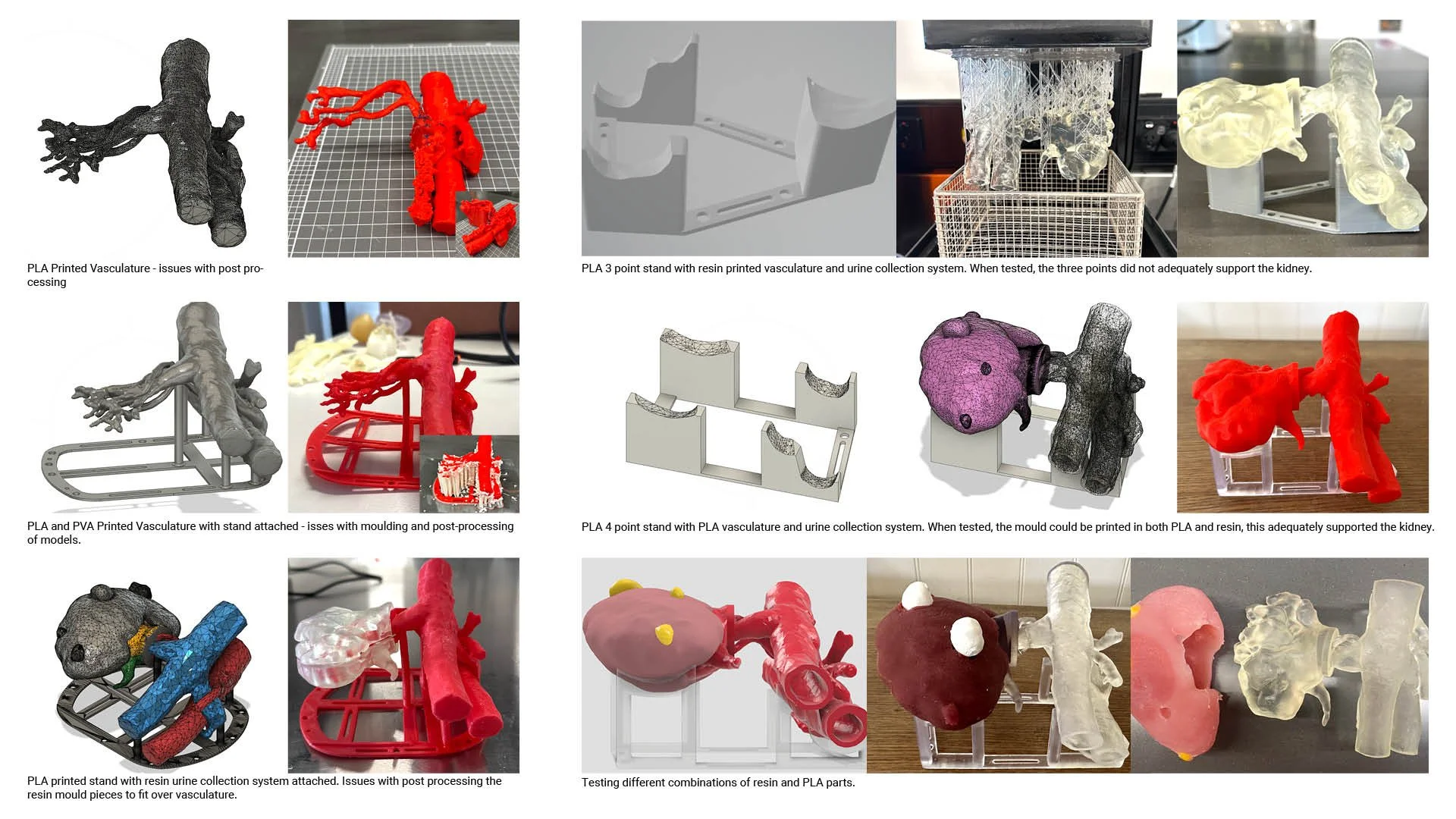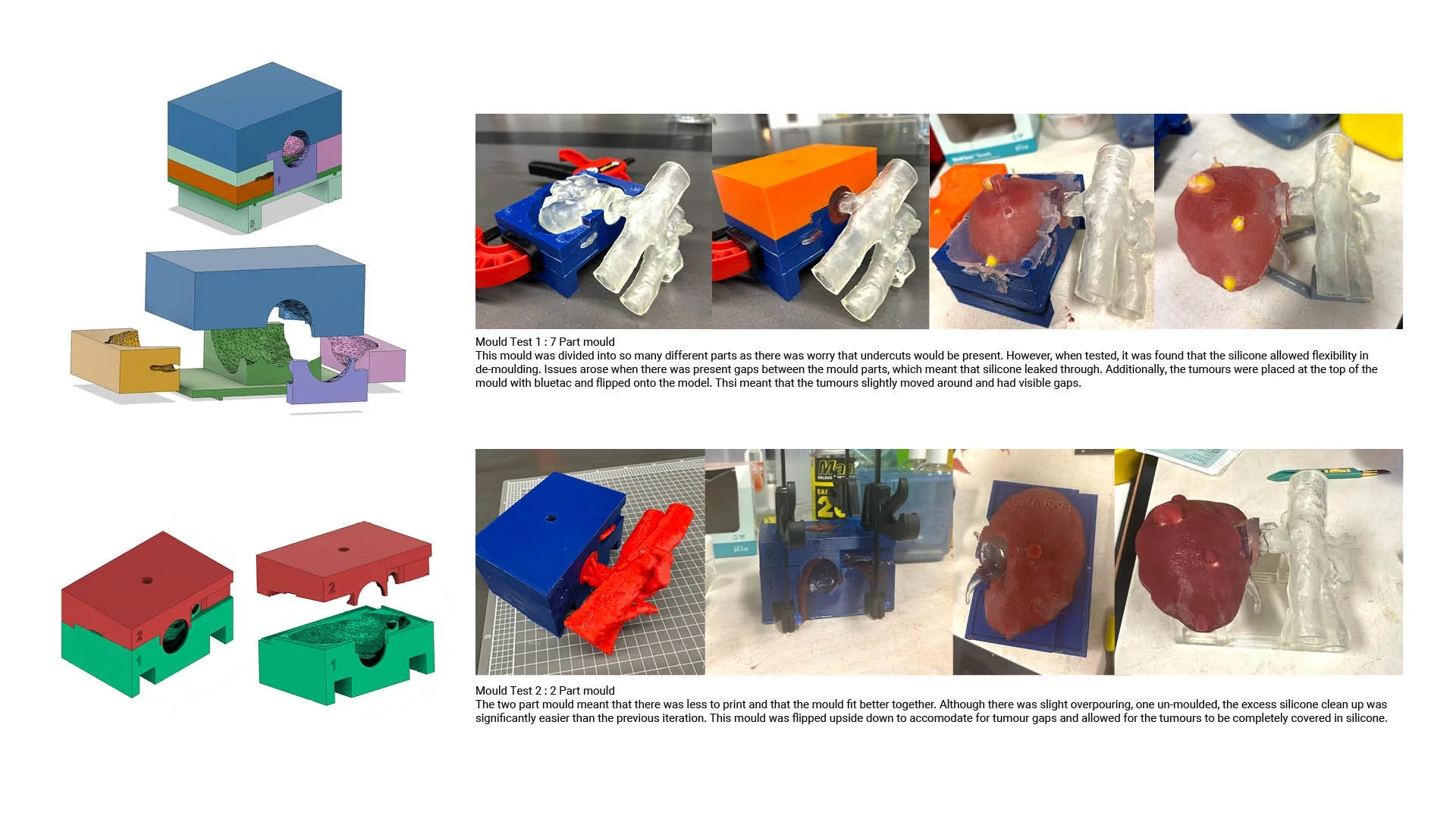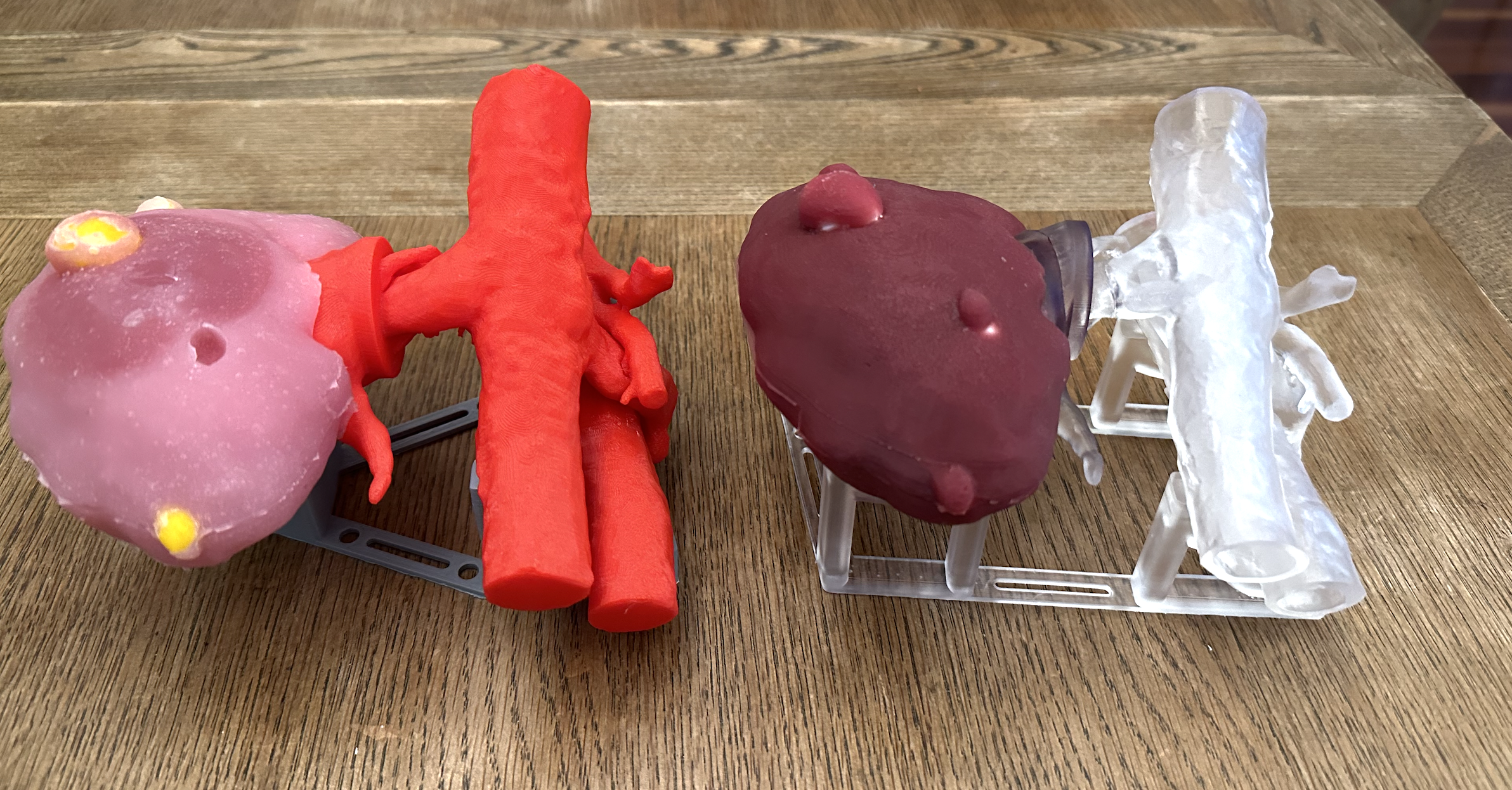PARTIAL NEPHRECTOMY TRAINING MODEL
Helping medical students and doctors learn about kidney surgery using sustainable and accessible training models.
Design Brief : Collaborate with the Herston Biofabrication (HBI) Institute to create a Partial Nephrectomy Training model.
Product Overview: In collaboration with researchers and medical students at HBI a partial nephrectomy training model was made. This model Utilised PLA and silicone and allows for medical students to gain practical experience in excising tumours and closing the excision using specific suturing techniques.
Year : 2022/3
DISCOVER & DEFINE
The research was conducted to find major issues with current training models and the requirements for an accurate new training model.
RESEARCH
-
Currently, medical students and doctors utilise either cadavers or expensive training models to practise partial nephrectomies. These models are often single-use and in-accessible due to their costing.
-
The main parts of a partial nephrectomy include the vasculature (vein/arteries), urine collection system (ureter, calyces), kidneys and tumours.
During the procedure, depending on the situation, the surgeon excises the tumour and sutures the excision site closed (two suture layers).
-
To best simulate a nephrectomy model, certain materials must be used. Based on current models and materials on the market, potential material selections can include silicone dragon skin and hydrogel. These materials can be further supported using mesh, cotton and silk.
Research was analysed to create the main design criteria for the project.
DESIGN CRITERIA
-
The model must be affordable and easily accessible. This means that it should be able to be printed using FDM printing, specifically PLA. There should also be limited moving parts to decrease the chance of errors and post processing.
-
The model must be sustainable. This means that either sustainable materials are used or the model can be re-used in some capacity.
The model should also be interchangeable to some degree. This can mean that tumours can be moved around to adjust difficulty or certain parts can be re-used when model is re-used.
-
Materials that mimic the feeling of suturing a kidney should be used. Through this, the model should be able to be tilted and adapted to different nephrectomy difficulties.
DEVELOP
A series of sketches, CAD models and test prints were made to further develop the overall concept to meet the design criteria.
DELIVER
After completing the earlier stages of the design process, the final model was created. This utilised the combination of 3D printing and silicone moulding to create a product to satisfy the design criteria.







